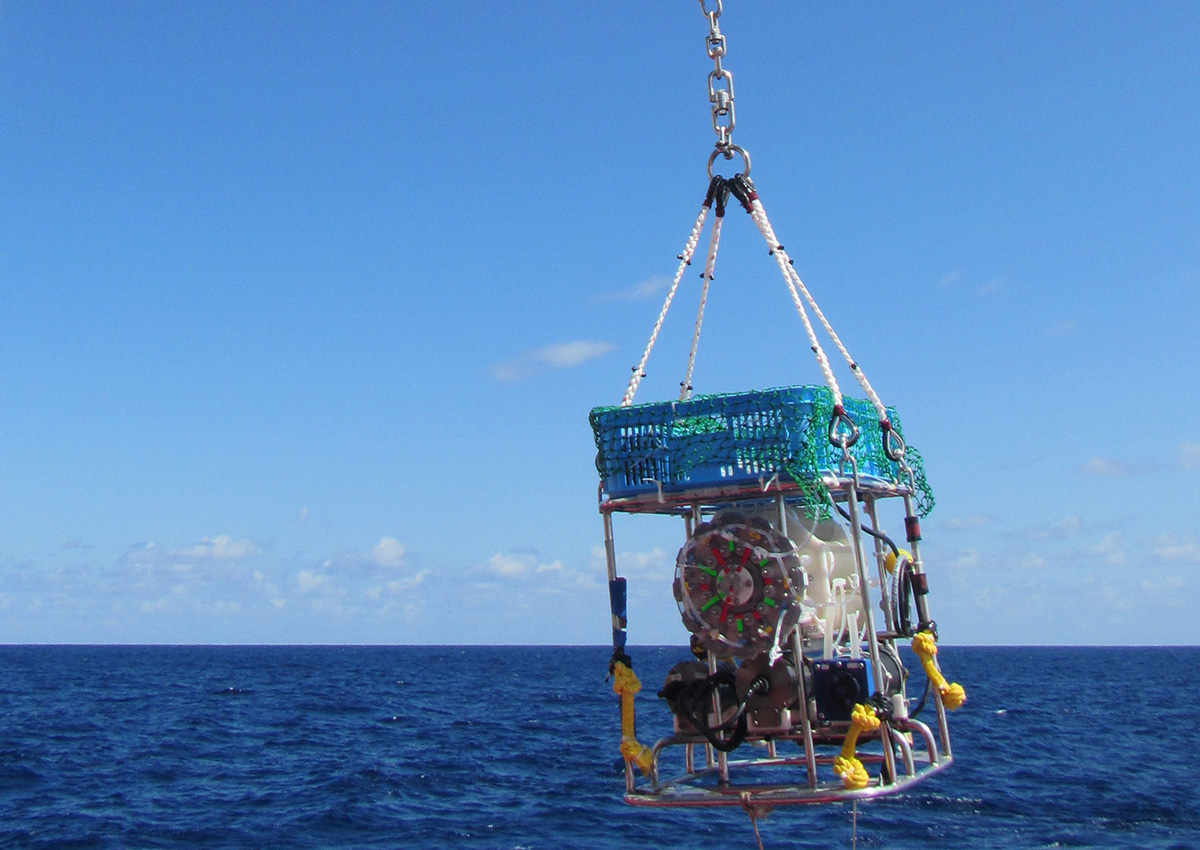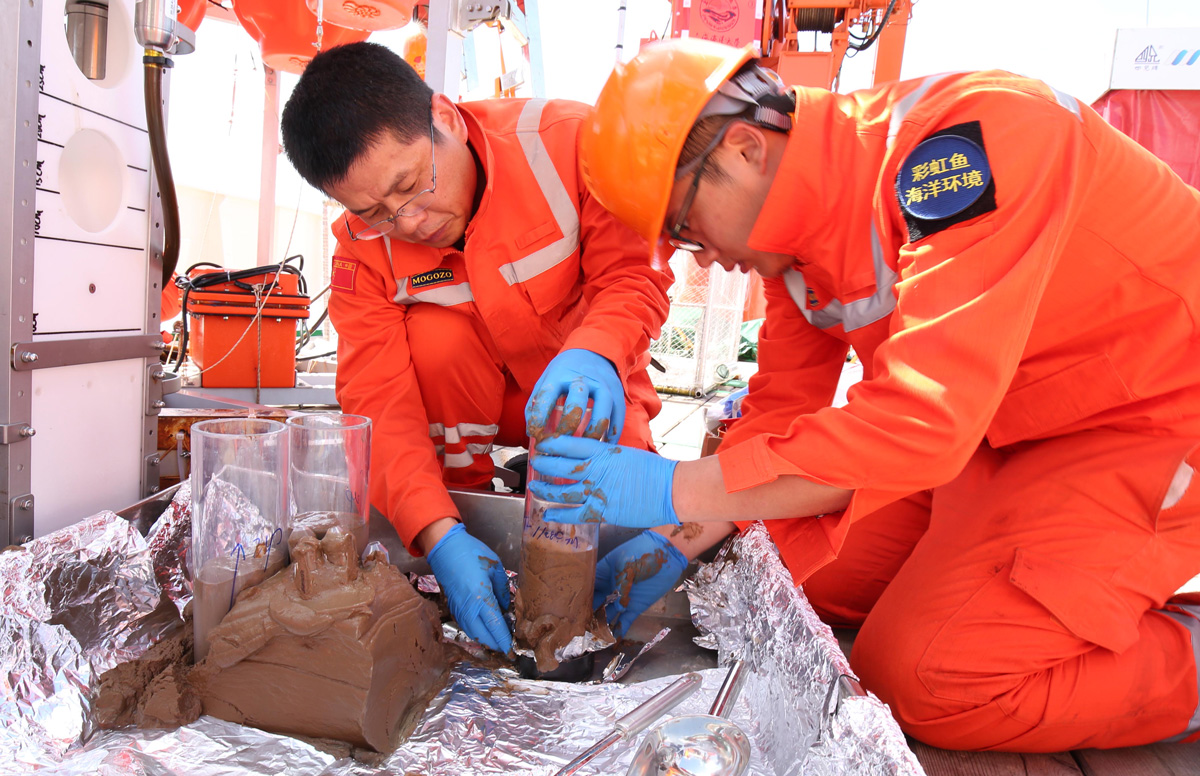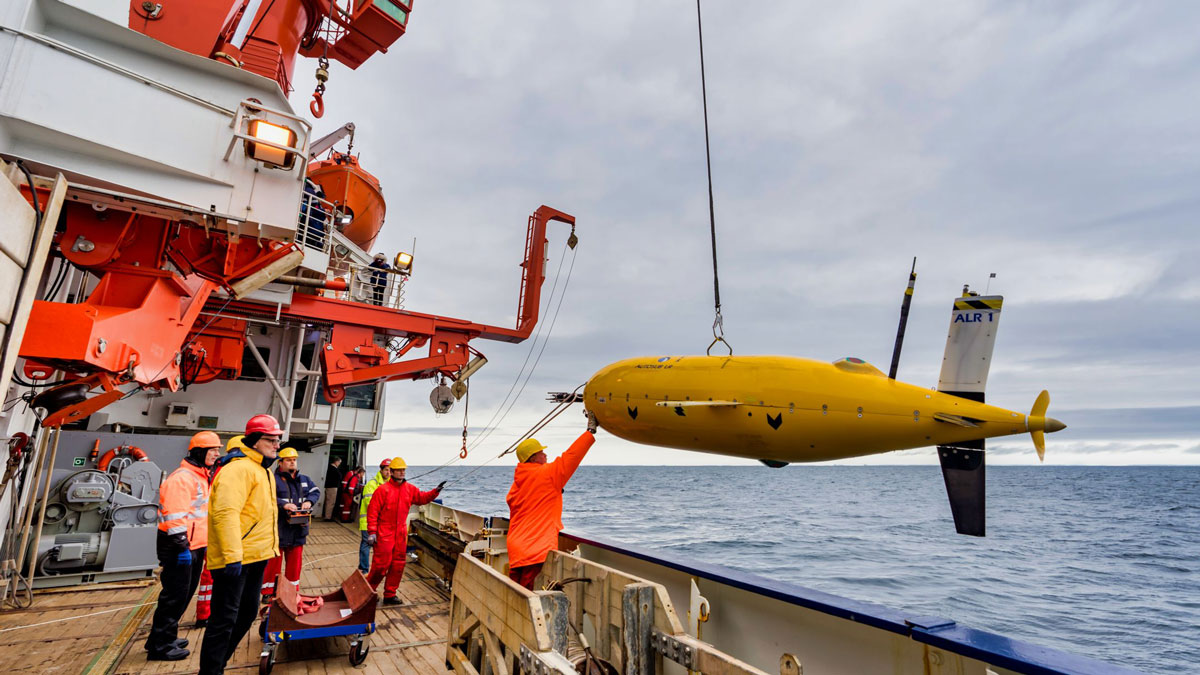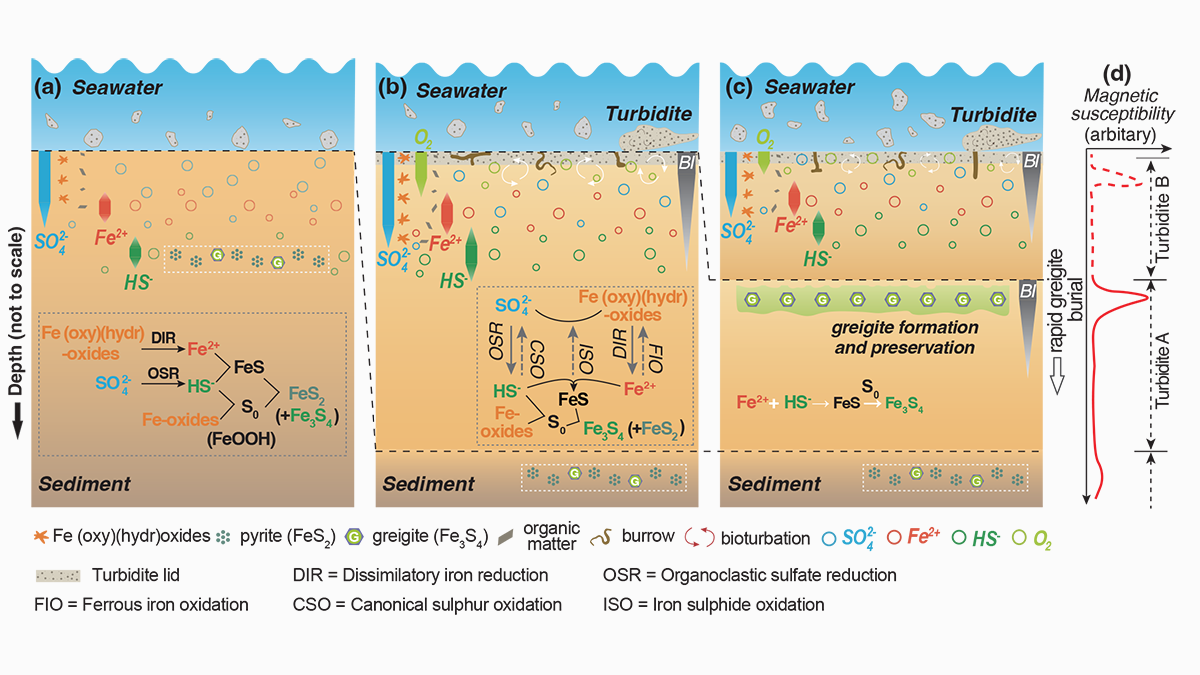La presión extrema que existe en el mar profundo reduce el apetito de los microorganismos por carbono orgánico. Este hallazgo podría tener implicaciones importantes en la geoingeniería y el balance de carbono global.
research at sea
Carbon In, Carbon Out: Balancing the Ocean’s Books
Scientists have developed a consensus guide of standard protocols for how best to measure oceanic primary productivity, a key component in Earth’s carbon cycle.
Making Sense of the Great Barrier Reef’s Mysterious Green Donuts
Researchers set sail to the Great Barrier Reef to study how ring-shaped algae deposits formed and evolved, what feeds them, and the diversity of creatures that call them home.
Observing a Seismic Cycle at Sea
Scientists organized a trio of expeditions to document the buildup of stress leading to a large earthquake on a seafloor fault, developing innovations for successful seagoing research in the process.
喷气推进的被囊动物在海洋碳循环中的作用
新研究表明,广泛分布的胶质浮游动物的大量繁殖,连同它们的粪便、每日的垂直迁移和它们的尸体一起,增加了海洋的碳输出。
Jet-Propelled Tunicates Pump Carbon Through the Oceans
New research reveals that blooms of the widespread gelatinous zooplankton—along with their feces, daily vertical migrations, and carcasses—increase marine carbon export.
Deep-Sea Pressure Crushes Carbon Cycling
The extreme pressure in the deep sea stifles microbes’ appetite for organic carbon. This finding could have important implications for carbon budgets and geoengineering.
In the Deepest Ocean Reaches, a Potent Pollutant Comes to Rest
Surprising amounts of mercury settling into deep-sea trenches may provide a fuller picture of the metal’s path through the environment, but pulling it to the surface is no easy feat.
Exploring a Warm Water Inflow Below an Antarctic Ice Shelf
Researchers guided an autonomous underwater submarine to capture the first direct observations of a warm water current flowing in below the Filchner-Ronne Ice Shelf in Antarctica.
New Mechanism for “Giant” Greigite Growth in Deep-Sea Sediments
Understanding greigite formation pathways in sediments is a prerequisite for assessing the marine iron-sulfur-carbon cycle and yield reliable near-syn-sedimentary paleomagnetic records.










